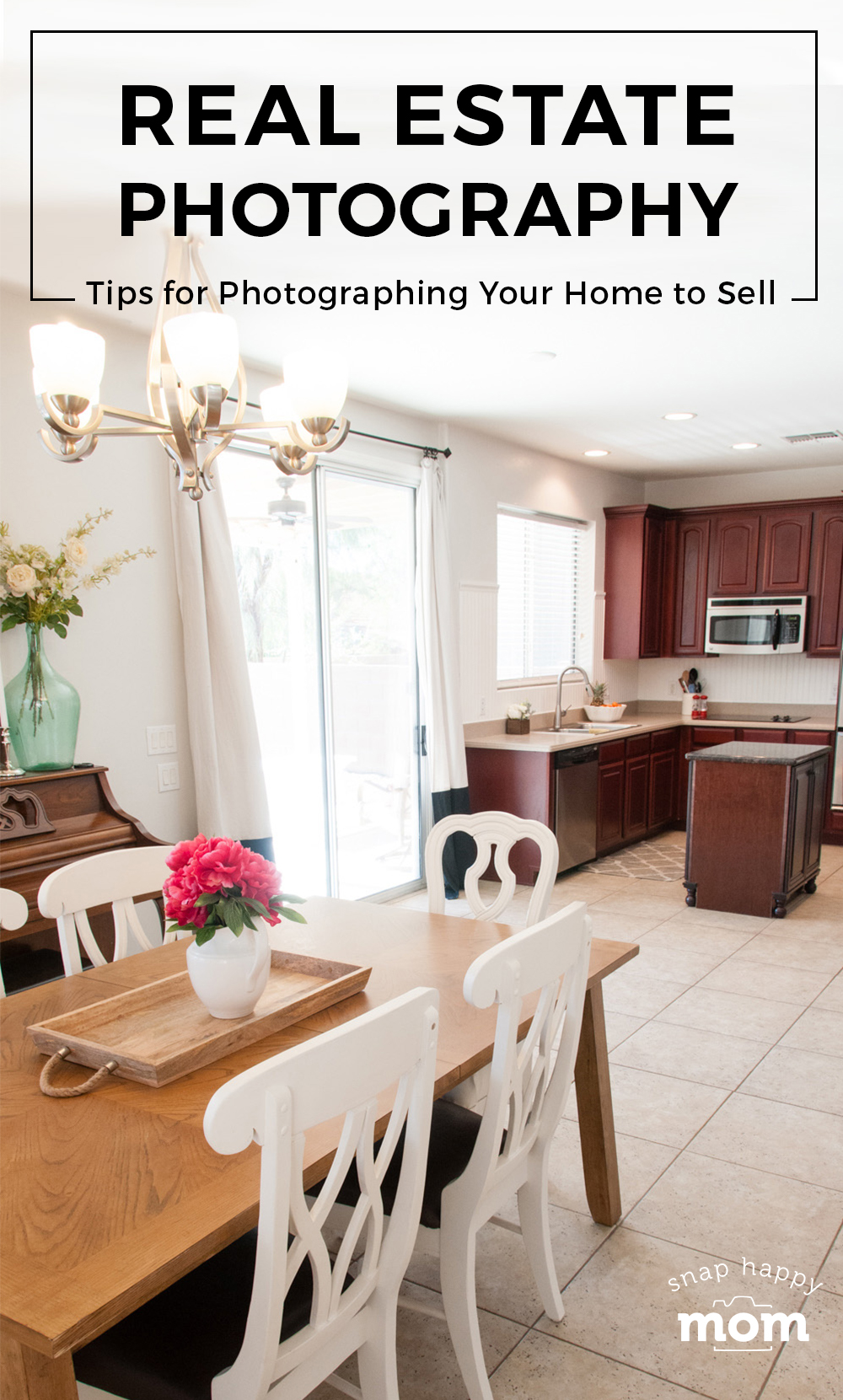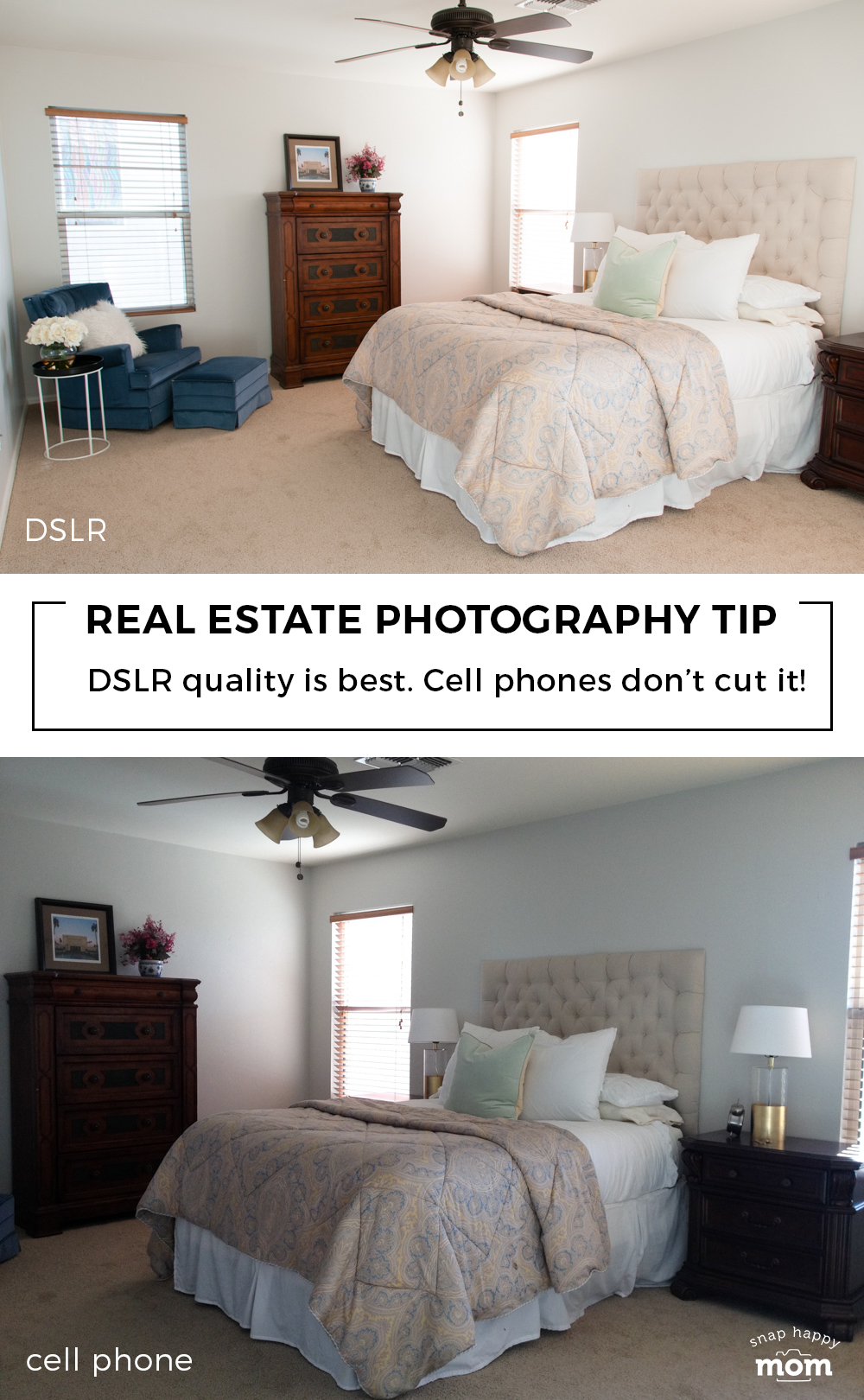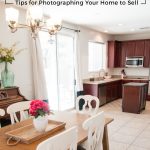Selling your house? Then you need great real estate photography! Take your own MLS photos with these 10 tips for photographing the interior of your home.
If you are trying to sell your home, you absolutely must have good photos for your listing! The photos are the first thing prospective buyers see, and you want to make a great first impression.
Depending on your realtor, you may need to provide your own pictures of the home, so use these tips to take amazing real estate photos yourself!
This post is part of a mini-series about photographing your home. See the other posts here:
How to Stage the Interior of Your Home for Real Estate Photography
How to Photograph the Exterior of Your Home for Real Estate Photography

TAKING THE PHOTOS
1. No cell phone shots. You need a DSLR for real estate photography!
I know a phone is handy, but it is just not going to show off your home. A cell phone or point & shoot camera simply cannot give you the quality, format, and detail you need for pictures of a home you're trying to sell!
Here are the reasons why you need a DSLR for real estate photography:
- The picture format on a DSLR is wider, allowing for more of your room to be shown in every photo. DSLR cameras shoot at a 4:3 ratio, while cell phones only shoot at 3:2. That means a DSLR will take a wider photo horizontally, which will show more of your house.
- You can shoot on a wide-angle lens on a DSLR, while you're limited to a normal cell phone lens otherwise (more on this below).
- The picture quality is several times better, which means you can have more detail in the shot when viewed full-screen.
- DSLRs have superior colors and focusing abilities, especially in low-light conditions (and I'm sure at least one room in your house is dark!)
- A DSLR photo can take advantage of more powerful editing capabilities with computer software - cell phone apps have only basic editing options with much less control.
Here's an example of what DSLR quality on the top, and cell phone quality on the bottom. If you want your house to sell quickly, you should be willing to take the best possible photos you can get!

I didn't move my feet at all between the two shots, although I angled them slightly differently.
See how much more of the room the DSLR shot can fit in? I didn't crop the photos... the cell phone literally couldn't "see" as much from left to right as the DSLR. Not to mention how dark and dreary the cell phone shot looks. (Sure you can edit it a bit, but it will never look like the DSLR version.)
If you don't already have a DSLR, these are the cameras I recommend. You could choose any of these cameras and use the kit lens to take pictures of your home.
You could also ask a friend with a camera to come and take photos - but having a high-quality camera to use with your family is worth it!
2. Use a wide-angle lens, but don't misrepresent the home.
DSLRs have different lenses that help capture the photography. You'll want to use a wide-angle lens to get the best interior shots of a house, so you'll need something that goes down to 10-24mm.
The kit lens that came with your camera should be sufficient for this in the "zoomed out" 18mm position.
The wide-angle will help you capture the whole room at once, as opposed to only being able to capture one wall or corner of the room. The point is not to distort the room, but to help the viewer visualize what the whole room looks like.


